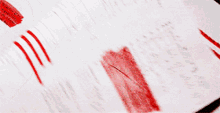The Guy cannot recall any “legacy media” coverage of Scott Hahn, the influential U.S. Catholic lay theologian. If you haven’t done a feature on this fascinating Ohioan, here’s the ideal news peg -- Pope Francis’s Synod of Bishops that begins at the Vatican October 4.
There’s Catholic dynamite here. Hahn, who has a huge parish-level following, stated via Facebook August 24 that he’s “grateful for Bishop [Joseph] Strickland’s inspiring words,” and posted a link to a new pastoral letter from the outspoken Texas conservative who is attacking the synod (and under increasingly fierce Vatican pressure to cease his dissent or be forced to resign).
Strickland warned that “schismatics” are promoting “evils that threaten” the church, and implied that Pope Francis himself (though unnamed) is facilitating their nefarious cause through his Synod on Synodality process. See GetReligion backgrounder on the Synod dispute here.
Among reactions, founder Mike Lewis at WherePeterIs.com said he’s long admired Hahn’s contributions to the faith so it’s “deeply disappointing” that he is now embracing a “toxic” and “reactionary” movement that Catholics loyal to the papacy worry could produce a “schism coming from the far-right of the U.S. Church.”
Hahn, 65, is the longtime professor of Biblical Theology and the New Evangelization at Franciscan University, a growing liberal-arts stronghold devoted to “the authentic teachings of the Church.” Journalists who scan the websites for Hahn’s off-campus activities and his Saint Paul Center for Biblical Theology will find he’s a popular speaker in person and via religious TV and radio, and a prolific producer of his own and others’ books, articles, DVDs, CDs, podcasts, online courses and conferences.
His organization, in its Catholic conservatism and independence from official church agencies, resembles the EWTN organization that grew from TV talks by the late Mother Mary Angelica beginning in 1981.
Hahn holds a Ph.D. from the Jesuits’ Marquette University in Milwaukee, but it’s significant that his divinity degree is from Gordon-Conwell Theological Seminary, a Northeast anchor of evangelical Protestant thought.






